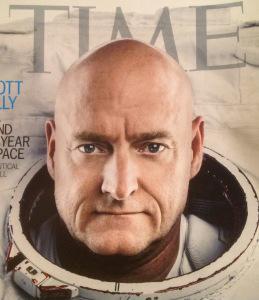
When NASA director Dr. Charles F. Bolden Jr. said that this year’s mission selection process was the most difficult session in more than two decades, it got me thinking:
I wonder how Barbara Eden is doing?
After a quick Google search found her alive and well, a second thought crossed my mind:
What is the criteria for giving a space mission the green light nowadays, especially in this era of cutbacks? And, perhaps more importantly, how do they manage to come up with such cool acronyms for each one?
After calling the NASA hotline and engaging its new automated information system known as Orbital News History and Official Lunar Development (ONHOLD), I eventually spoke with an actual Programs Education and Research Specialist Operator for Newspapers (PERSON).
It was during this conversation that I discovered the frightening truth. For many years NASA utilized a two-step process in determining its mission programs. This process involved having someone from the automobile industry submit the name of a new sport utility vehicle — Voyager, Odyssey, Explorer, Pathfinder, Contour — then force NASA scientists and astrophysicists to design a mission to go along with it.
I’m happy to say that this is no longer a practice at NASA.
For the most part, anyway.
You see, even though space missions are no longer being dictated by car manufacturers (and why the budget has been reduced to whatever NASA employees can scrape from their car ashtrays), catchy acronyms are still a must.
Here are just a few examples of how having the right name can mean the difference between getting a green light or red light for your mission project:
Stratospheric Observatory for Infrared Astronomy:
(SOFIA)
Green light.
Mars Universal Cybernetic and Ultraviolet System:
(MUCUS)
Red light.
Fast Auroral Snapshot Explorer:
(FAST)
Green light.
Reflective Electron Cylindrical Transmitter and Universe Monitor:
(RECTUM).
Red light.
Near Earth Asteroid Rendezvous:
(NEAR)
Green light.
Unlimited-Rocket-Fueled Initiative Response Experimental Drone:
(U-R-FIRED).
Red light.
Mosty by a lack of volunteers.
The truth is, while some programs have quickly moved to the launch pad, mission proposals that are just as important to mankind have been scrapped simply because they translated into acronyms like CUT-BACKS, SPUTNIK and VOMIT.
Which isn’t to say that missions scheduled for the near future aren’t beneficial. In March, Nasa will send an astronaut to the International Space Station for a year in order to study the long-term effects of zero gravity on the human body. The mission, Long-term Interstellar Motion Project (LIMP) even made the cover of TIME magazine.

Wait a MINUTE! Isn’t that the guy from “Lost?”
Also later this year, the FAME mission (Full-sky Astrometric Mapping Explorer), which was scrapped in 2009 when a remake of the 1980 movie of the same name imploded at the box office, will begin a five-year trek to map out and measure the distances between 40 million stars.
Both of these missions are critical steps in the evolution of civilian space travel…
“Are we almost there yet?”
“No. We’ve got six light years to go.”
“But I have to use the potty.”
“We just stopped for gas at the Milky Way! Why didn’t you go then?”
“I forgot.”
“Can you hold it?”
“For how long?”
“Just to Uranus.”
Remember: In space, no one can hear you scream.
————————–
MORE PLACES TO FIND LONG AWKWARD PAUSE:
Facebook: Long Awkward Pause
Twitter: @LongAwkPause
Tumblr: Long Awkward Pause Mag
Podcast: iTunes or PodOmatic
LAP TV: YouTube
Would you like to see a topic discussed on LAP? Click HERE.

